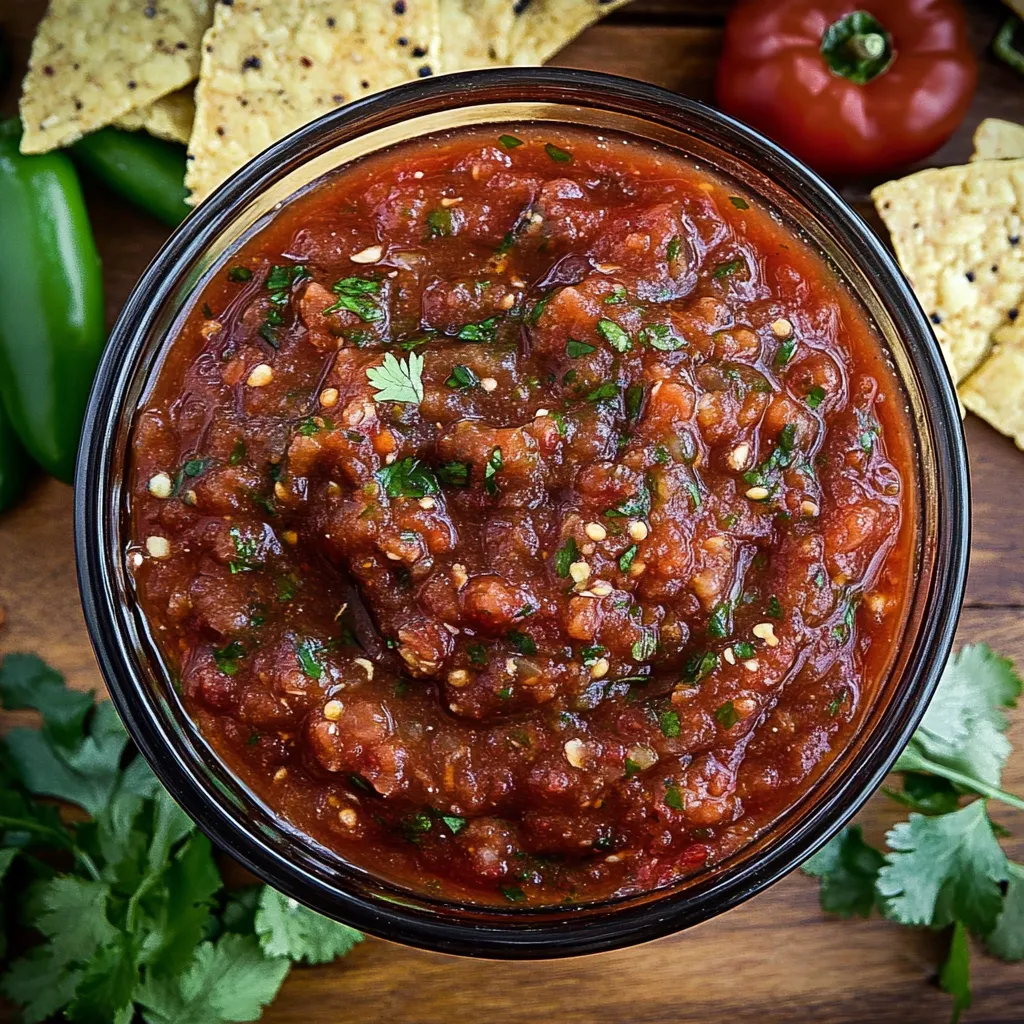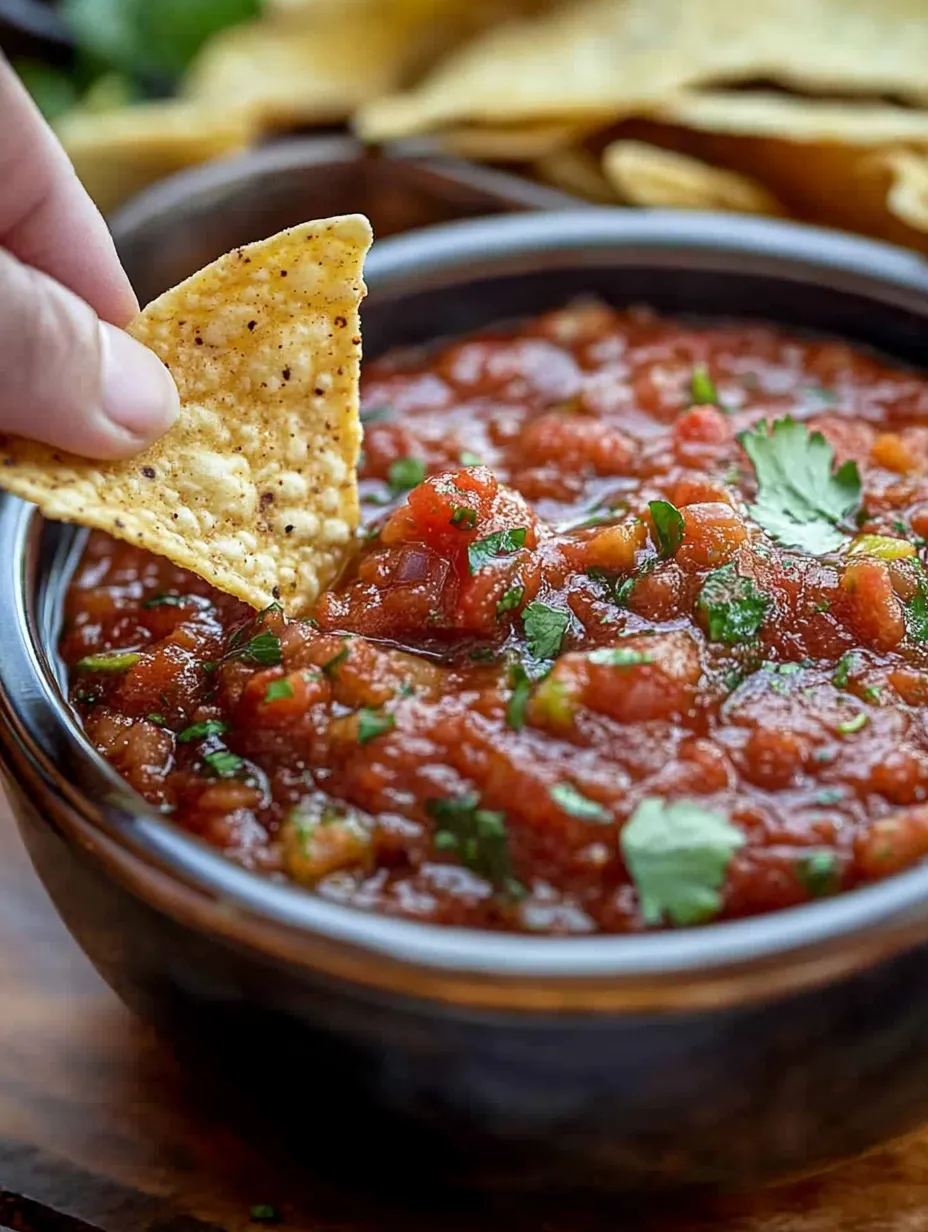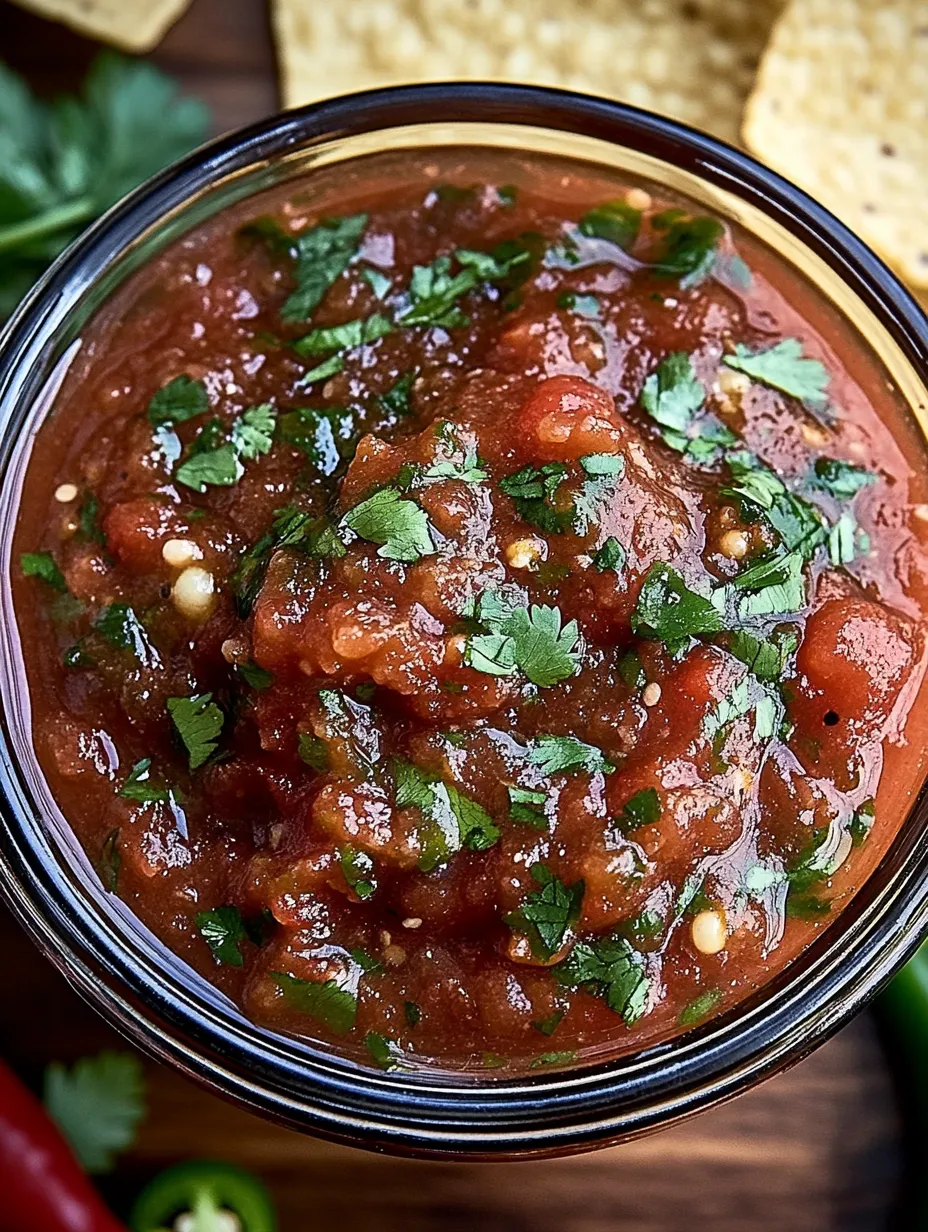 Pin it
Pin it
Roasted salsa transforms ordinary vegetables into something extraordinary through the magic of high heat, which caramelizes and intensifies their natural sweetness while adding smoky depth. Unlike its fresh counterpart, this version develops complex layers of flavor as the vegetables char and soften under the broiler. The resulting dip maintains the bright essence of traditional salsa but with a deeper, more satisfying character that keeps people coming back for "just one more chip." Best of all, it comes together with minimal hands-on time while filling your kitchen with mouthwatering aromas.
Flavorful Foundation
- Depth of Flavor: Roasting creates rich, caramelized notes impossible in raw salsa
- Customizable Heat: Easily adjust spice levels by varying jalapeño quantity
- Versatile Uses: Works beautifully as a dip, topping, or cooking ingredient
- Seasonal Adaptability: Perfect with peak summer tomatoes but works year-round
I discovered the magic of roasted salsa during a summer when my garden produced more tomatoes than we could possibly eat fresh. Seeking alternatives to yet another pasta sauce, I experimented with roasting and was stunned by how a simple cooking method completely transformed familiar ingredients. My family, who had become jaded by my endless tomato creations, devoured this salsa with enthusiasm, requesting it for everything from breakfast eggs to dinner tacos. Now we make it year-round, adjusting the roasting time for less flavorful winter tomatoes.
Quality Components
- Ripe Tomatoes: The foundation of great salsa, providing sweetness and acidity
- Jalapeños: Offer customizable heat and distinctive pepper flavor
- Red Onion: Contributes sweetness and depth when roasted
- Fresh Garlic: Becomes mellow and complex through roasting
- Cilantro: Adds bright, herbaceous notes to balance roasted flavors
 Pin it
Pin it
Simple Creation
- Vegetable Preparation:
- Begin by preheating your broiler with the rack positioned about 6 inches from the heat source. Line a rimmed baking sheet with aluminum foil for easy cleanup. Take 6 medium beefsteak tomatoes (about 3 pounds) and quarter them, leaving the cores intact as they'll help tomatoes hold their shape during roasting. Slice 2 jalapeños in half lengthwise and remove seeds and membranes for milder heat, or leave them in for more spice. Cut 1 medium red onion into quarters and peel 4 garlic cloves, leaving them whole. Arrange all vegetables on the prepared baking sheet in a single layer with tomatoes and jalapeños skin-side up. The arrangement matters little as everything will be blended later, but spacing them slightly allows for more even roasting.
- Roasting Magic:
- Place the baking sheet under the preheated broiler and roast for about 9 minutes, until the vegetable skins begin to blacken and blister. Using tongs, carefully flip each piece over and continue roasting for another 10-15 minutes. You're looking for significant charring on the vegetables—don't fear the black spots, as they contribute fantastic smoky flavor! The tomatoes will collapse and release their juices, the jalapeños will soften, and the onion and garlic will become tender and sweet. Your kitchen will fill with an irresistible aroma that signals transformation is underway.
- Blending Balance:
- Allow the roasted vegetables to cool slightly for easier handling, about 10 minutes. Transfer them to a food processor, including all the flavorful juices from the baking sheet. Add 1/2 cup fresh cilantro leaves (stems removed) and 1 teaspoon kosher salt. Pulse the mixture several times to reach your desired consistency—some prefer a completely smooth salsa, while others enjoy more texture with recognizable bits of vegetables. I find 5-7 pulses creates the perfect balance of smooth and chunky. Taste and adjust seasoning, adding more salt if needed or an optional squeeze of lime juice for brightness.
- Flavor Development:
- Transfer the salsa to a bowl and let it rest for at least 30 minutes before serving, though longer is better. This resting period allows the flavors to meld and develop, significantly improving the final product. If you have the patience to refrigerate it overnight, you'll be rewarded with even more harmonious flavor. Just be sure to bring it back to room temperature before serving for the best taste experience. The flavors will continue developing over several days, making this an excellent make-ahead option.
My neighbor Mark, who proudly claimed his mom made the "world's best salsa," became uncharacteristically quiet after trying this roasted version at our backyard barbecue. After his third helping, he reluctantly admitted it might even surpass his family recipe and asked for detailed instructions. The next weekend, I spotted him at the farmers market loading up on tomatoes and jalapeños. Now our families have a friendly salsa competition each summer, with both versions making an appearance at neighborhood gatherings. Sometimes the best traditions grow from good-natured rivalry.
Creative Applications
Beyond the obvious tortilla chip pairing, this versatile salsa elevates countless dishes. Spoon it over scrambled eggs for a flavorful breakfast boost or use it to top baked potatoes instead of traditional sour cream and chives. It makes an exceptional addition to grilled cheese sandwiches, adding moisture and flavor complexity. Mix it into macaroni and cheese for a grown-up twist on the classic comfort food. For dinner, use it as a flavor-packed topping for grilled chicken, fish, or steak, where the roasted notes complement the char from the grill beautifully.
Alternative Methods
If you don't have a broiler or prefer a different cooking method, an air fryer works wonderfully for this recipe. Simply cut the vegetables as directed, lightly spray with oil, and air fry at 375°F for about 15 minutes, shaking the basket halfway through. The vegetables won't develop quite as much char, but they'll still take on lovely roasted qualities. For those without access to a food processor, a blender works well for smooth salsa, or you can hand-chop the roasted vegetables for a more rustic approach. Even mashing with a potato masher creates delicious results with a chunky texture.
 Pin it
Pin it
Storage Strategy
This salsa keeps beautifully in the refrigerator for 5-7 days when stored in an airtight container, with flavors continuing to develop over time. For longer storage, freeze portions in ice cube trays, then transfer the frozen cubes to freezer bags for up to 3 months. This method allows you to thaw exactly the amount needed. Thaw frozen salsa in the refrigerator overnight for best results. If the salsa separates slightly after storage, simply stir to recombine before serving.
I created this roasted salsa recipe during a particularly challenging period when finding joy in small pleasures became essential to my wellbeing. The process of transforming simple ingredients through fire into something completely new provided a satisfying metaphor for resilience and adaptation. Each time I make it now, I'm reminded that applying heat and patience to difficult situations often yields unexpected beauty and depth. While that might seem like heavy symbolism for a humble dip, I've found that cooking with mindfulness infuses food with meaning beyond mere sustenance. This salsa continues to bring warmth to our table and connection to our community, proving that the most memorable recipes feed both body and soul.
